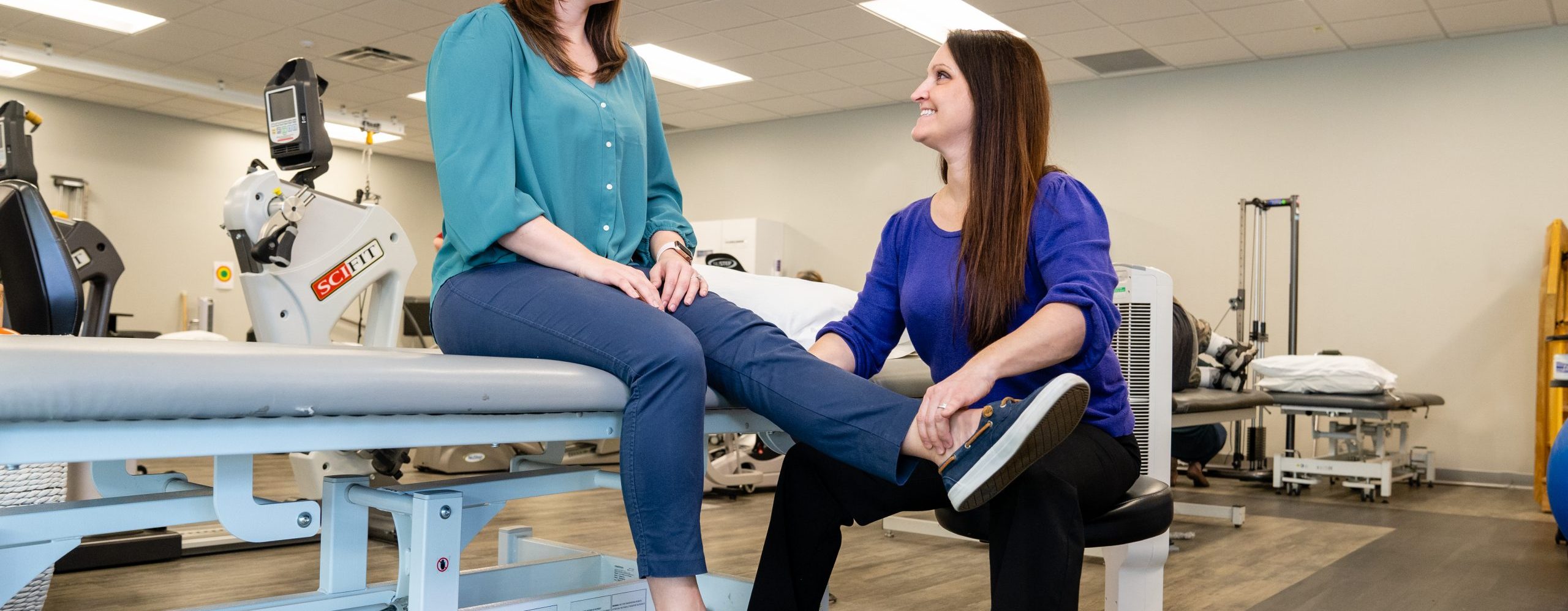What is skilled manual therapy?
Manual therapy techniques are skilled hand movements and skilled passive movements of joints and soft tissue and are intended to do one or more of the following – increase flexibility; increase motion of a joint; promote relaxation of muscles; decrease pain; and reduce swelling, inflammation, or tightness in the muscles and surrounding tissues.
What conditions can benefit from manual therapy?
Almost any neuromusculoskeletal condition can benefit from some kind of manual therapy.
Most frequently manual therapy is utilized for individuals who have recently undergone a surgery to a joint or the spine as well as individuals experiencing musculoskeletal pain and/or stiffness.
Types of skilled manual therapy techniques
Techniques may include manual lymphatic drainage, manual traction, massage, mobilization/manipulation, and passive osteokinematic and or arthrokinematic range of motion.
Physical therapists select, prescribe, and implement manual therapy techniques when the examination findings, diagnosis, and prognosis indicate use of these techniques to decrease edema, pain, spasm, or swelling; enhance health, wellness, and fitness; enhance or maintain physical performance; increase the ability to move; or prevent or remediate impairment in body functions and structures, activity limitations, or participation restrictions to improve physical function.
To perform most of these techniques, the patient commonly lies down and the skin of the area that is being worked on will be exposed.
Soft tissue mobilization
Physical therapists may use a variety of techniques to decrease pain and promote relaxation in muscles that are tight or in spasm. These techniques usually feel very good and are not painful. Occasionally an individual may feel a stretch associated with these techniques, but again, it is not typically painful.
Joint oscillation
Joint oscillations are skilled movements that a physical therapist performs to very gently move the bones on either side of a joint in an oscillatory pattern. Joint oscillations are used in a manner similar to the soft tissue techniques in that they assist in decreasing pain and promoting relaxation. Also similar to soft tissue techniques the joint oscillations are generally not painful and in many cases feel good.
Joint mobilization
These are skilled techniques performed by the physical therapist using their hands to stretch structures around an individual’s joint that have developed tightness and are preventing the joint from moving properly. These techniques are typically not painful, but may be uncomfortable secondary to feeling a strong stretch and maybe sometimes a very mild internal burning sensation.
High Velocity, Low Amplitude (HVLA) thrust
This is another technique, along the continuum of manual therapy techniques, commonly performed by physical therapists that assist with decreasing pain and promoting relaxation of muscles. Patients are placed in a relaxed position frequently lying down or sitting and then the physical therapist, with their hands, will apply a very gentle, but quick movement to a specific bone within it’s normal movement. It is not expected, but also somewhat common to hear a “pop” associated with this technique.
Connect with us
In the state of Florida, patients can be evaluated and treated by a physical therapist for up to 30 days without a referral (dependent on insurance carrier). After 30 days, a referral is required. Referrals to see a physical therapist can come from your primary care provider.
